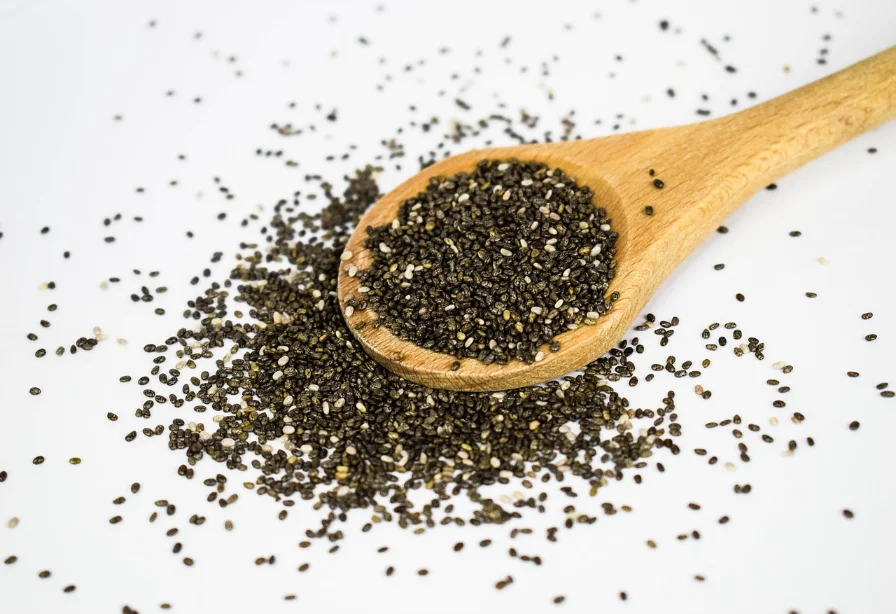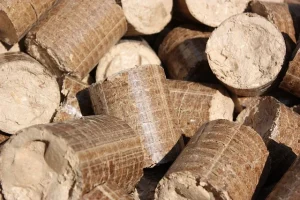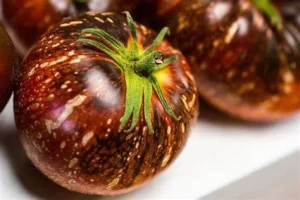Chia seeds are tiny, black, oval-shaped seed’s that come from the Salvia hispanica plant, a member of the mint family. They are native to Mexico and Guatemala, where they have been cultivated and consumed for centuries by the ancient Aztecs and Mayans.

Chia seed’s are considered a superfood because they are rich in nutrients, antioxidants, fiber, protein, and omega-3 fatty acids. They also have many health benefits, such as improving digestion, lowering cholesterol and blood pressure, enhancing energy and mood, and promoting weight loss.
In recent years, health enthusiasts and nutrition experts alike have hailed chia seed’s as a superfood with remarkable benefits for overall well-being. Packed with essential nutrients and versatile in culinary applications, chia seed’s have gained popularity as a dietary staple.
Nutritional Value of Chia Seeds
Chia seeds are a nutrient-dense food, meaning they provide a lot of nutrients for a relatively low amount of calories. According to the USDA, one ounce (28 grams) of chia seed’s contains:
- Calories: 138 - Fat: 9 grams (of which 5 grams are omega-3s) - Carbohydrates: 12 grams (of which 10 grams are fiber) - Protein: 4 grams - Calcium: 179 milligrams (18% of the daily value) - Iron: 2 milligrams (12% of the daily value) - Magnesium: 95 milligrams (24% of the daily value) - Phosphorus: 265 milligrams (27% of the daily value) - Zinc: 1 milligram (7% of the daily value) - Manganese: 0.6 milligrams (30% of the daily value) - Selenium: 5 micrograms (7% of the daily value) - Copper: 0.1 milligrams (3% of the daily value)
Chia seed’s also contain small amounts of vitamin A, vitamin B1, vitamin B2, vitamin B3, vitamin C, vitamin E, and vitamin K.
Health Benefits of Chia Seeds

1. Improved Digestive Health
One ounce (28 grams) of chia seed’s provides about 10 grams of fiber, which is 40% of the recommended daily intake for adults. Fiber helps regulate bowel movements, prevent constipation, lower blood sugar levels, and reduce the risk of colon cancer. Fiber also makes you feel full longer, which can help you control your appetite and prevent overeating.
2. Heart Health Support
Chia seed’s are one of the best plant sources of omega-3 fatty acids, which are essential for your brain, heart, and skin health. Omega-3 fatty acids can reduce inflammation, lower triglycerides and cholesterol levels, improve cognitive function and mood, and protect against Alzheimer’s disease and depression.
One ounce of chia seed’s contains about 5 grams of omega-3 fatty acids, which is more than the amount found in a quarter cup of walnuts or a 4-ounce serving of salmon.
3. Weight Management
While chia seed’s contain about 4 grams of protein per ounce, which is comparable to the amount found in an egg, protein is essential for building and repairing muscles, bones, skin, hair, and nails. Protein also helps boost your metabolism, increase your energy, and support your immune system. Chia seed’s are a complete protein, meaning they contain all nine essential amino acids that your body cannot produce on its own.
4. Blood Sugar Regulation
The gel-like consistency formed by soluble fiber in chia seed’s may slow down the absorption of sugar into the bloodstream, helping stabilize blood sugar levels. This can be particularly beneficial for individuals with diabetes or those at risk of developing the condition.
Culinary Uses of Chia Seeds
Chia seed’s are incredibly versatile and can be incorporated into a wide range of dishes, both sweet and savory. Some popular culinary uses of chia seed’s include:
- Adding them to smoothies for an extra nutritional boost
- Using them as a thickening agent in soups, sauces, and dressings
- Sprinkling them over yogurt, oatmeal, or salads for added texture and crunch
- Mixing them into baked goods such as muffins, bread, and pancakes

Chia Seed’s vs. Flax Seeds vs. Basil Seeds
| Aspect | Chia Seed’s | Flax Seeds | Basil Seeds |
|---|---|---|---|
| Source | Salvia hispanica plant | Flax plant | Sweet basil plant |
| Color | Varies (usually dark) | Brown or golden | Black |
| Flavor | Neutral | Nutty and earthy | Mild and slightly sweet |
| Nutritional Highlights | High in fiber, omega-3 fatty acids, protein | High in fiber, omega-3 fatty acids, protein, antioxidants | High in fiber, protein, antioxidants |
| Similar Benefits | Digestive health, heart health, weight management | Digestive health, heart health, weight management | Digestive health, blood sugar regulation, skin health |
| Drawbacks | N/A | Higher in calories, fat, and carbs per ounce, need for grinding before consumption, shorter shelf life | Lower in omega-3 fatty acids, need for soaking before consumption, limited availability, potential choking hazard |
| Nutrient Content per ounce (28 grams) | Fiber: High Protein: Moderate Omega-3 fatty acids: High Calcium: Moderate Manganese: Moderate Phosphorus: Moderate | Fiber: High Protein: High Omega-3 fatty acids: High Calcium: Low Iron: Low Magnesium: Low Phosphorus: Low Zinc: Low Manganese: Low | Fiber: High Protein: Moderate Omega-3 fatty acids: Low Calcium: Low Iron: Low Magnesium: Low Phosphorus: Low Zinc: Low Manganese: Low |
This table provides a comparative analysis of chia seed’s, flax seed’s, and basil seed’s based on various aspects such as source, color, flavor, nutritional highlights, similar benefits, drawbacks, and nutrient content per ounce.
How To Use Chia Seeds

1. Raw
You can sprinkle chia seed’s on top of your dishes or eat them by a spoonful. However, be careful not to eat too many at once, as they can expand in your stomach and cause bloating or discomfort. A good rule of thumb is to limit your intake to one or two tablespoons per day.
2. Soaked
You can soak chia seed’s in water, juice, milk, or any other liquid for about 10 minutes or overnight. This will create a gel-like consistency that is similar to tapioca pudding. You can eat this as a snack or dessert, or use it as a base for your smoothies, puddings, or jams. Soaking chia seed’s can also make them easier to digest and absorb their nutrients.
3. Ground
You can grind chia seed’s into a fine powder using a blender, coffee grinder, or food processor. You can use this as a substitute for flour in your recipes, or as a thickener for your sauces, soups, or gravies. Grinding chia seed’s can also increase their shelf life and prevent them from going rancid.
4. Sprouted
You can sprout chia seed’s by placing them on a moist paper towel or a shallow tray with water. Cover them with another paper towel or a lid, and place them in a sunny spot. Within a few days, you will see tiny green sprouts emerging from the seeds. You can eat these sprouts as a garnish or add them to your salads, sandwiches, or wraps. Sprouting chia seed’s can enhance their flavor and increase their vitamin and enzyme content.
Potential Side Effects and Precautions
Chia seed’s are generally safe and healthy to consume, but they may have some potential side effects and precautions for certain people or situations. Here are some of them:
- Higher risk of bleeding. Chia seed’s are high in omega-3 fatty acids, which can thin your blood and reduce clotting. While beneficial for heart health, consuming chia seed’s may heighten bleeding risk, particularly for those with bleeding disorders or on blood-thinning medications.
- Choking risk. Chia seed’s can absorb up to 27 times their weight in water, forming a gel-like substance. Eating dry chia seed’s can fill you up and hydrate, but they may pose a choking hazard. Soak or add to moist foods to prevent this.
- Allergic reactions. Chia seed’s are related to the mint family, which includes plants like basil, oregano, sage, and lavender. If you are allergic to any of these plants, you may also be allergic to chia seed’s. Some of the symptoms of an allergic reaction to chia seed’s include hives, itching, swelling, difficulty breathing, and anaphylaxis.
- Digestive issues. Chia seed’s are rich in fiber, which can help improve your digestion and bowel movements. However, too much fiber can also cause some digestive problems, such as bloating, gas, cramps, diarrhea, or constipation. To avoid this, you should start with a small amount of chia seed’s (one teaspoon per day) and gradually increase your intake as your body adjusts.
- Weight gain. Chia seed’s are low in calories, but high in fat and protein. This can help you lose weight by suppressing your appetite and increasing your metabolism. However, if you eat too many chia seed’s, you may end up consuming more calories than you burn, which can lead to weight gain. To prevent this, you should moderate your intake of chia seed’s and balance them with other healthy foods.
While this superfood provides many health benefits, it’s vital to consume them in moderation and understand potential side effects. Some individuals may face digestive problems like bloating, gas, or diarrhea, especially if chia seed’s are eaten excessively or without proper hydration.
Conclusion
In summary, chia seed’s are a nutrient-rich powerhouse filled with fiber, protein, omega-3 fatty acids, and a variety of vital vitamins and minerals. Incorporating chia seed’s into your diet can support digestive health, heart health, weight management, and blood sugar regulation.
With their versatility and impressive nutritional profile, chia seed’s are indeed worthy of their superfood status. Start incorporating this superfood into your diet today and reap the countless benefits they have to offer!
Related Posts
- Dieffenbachia Varieties: History, Growing & Caring Techniques
- r/gardening: Community, Knowledge, and Inspiration, Tips & Tricks
- Epic Gardening: Why, Benfits & How To Get Started
- Wool Pellets: The Secret Ingredient for a Lush Garden
- Hydroponic Gardening: Definition, Types, Growing Tips And Tricks

Benjamin Smith
Greetings, fellow garden enthusiasts! I’m Benjamin Smith, the dedicated administrator of NoviceNurturer.com, your go-to destination for all things kitchen gardening. As a firm believer in the therapeutic power of plants and the joy of growing your own food, I’ve curated this space to share my passion and knowledge with you……







